The Cornerstone Content Creation Checklist
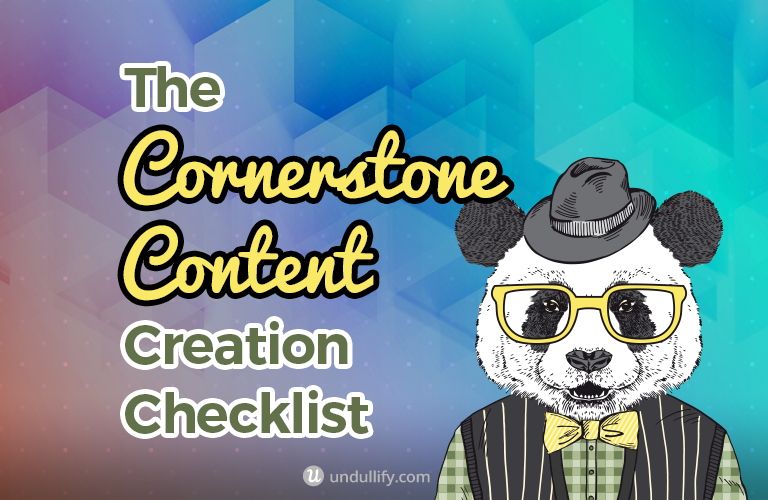
So, you’ve got a blog – everybody says your business should have a blog, so you made one. And maybe you regularly write articles relevant to your industry or the customers you hope to attract.
Chances are, if you’ve been doing this for a while, you have a large number of articles that relate to the core theme of your business.
Do your visitors have an easy way to navigate that content? (Hint: tag and category archives don’t count!)
If you’ve created a number of articles around the core theme of your business, and don’t have a sort of “gateway” to guide your visitors to the specific content they are looking for, what you need is a cornerstone article.
Cornerstone content is epic, over-arching introductory material about a core theme of your business that can act as a gateway to other articles on the same topic.
Consider it a sort of “resource center” to that topic.
When you create cornerstone content, your goal is to be the ultimate source on that particular topic.
But how do you do that?
Easy: just follow the simple steps laid out in this article!
Then check out the checklist at the end for a concise set of steps to follow.
Consider Upgrading an Existing Post
Wait! Before you start from scratch, it is a good idea to consider if you already have an existing article on your site that you could “elevate” to cornerstone content status.
Consider your highest value posts – is one of them broad enough in scope to become a guide to the other articles on your blog about that topic, with some edits and additions?
You don’t want to create multiple pieces of content that compete for the same set of keywords, so this is always the first place you want to look.
Target Your Most Competitive Keywords
It is essential to perform keyword research before you create your cornerstone content. Even if you don’t do keyword research normally, now is not the time to skimp out.
Since cornerstone content is so valuable, central, and high-level, it is often your best shot at ranking for your most competitive terms. These terms are called “head terms” and are typically 1-3 word phrases.
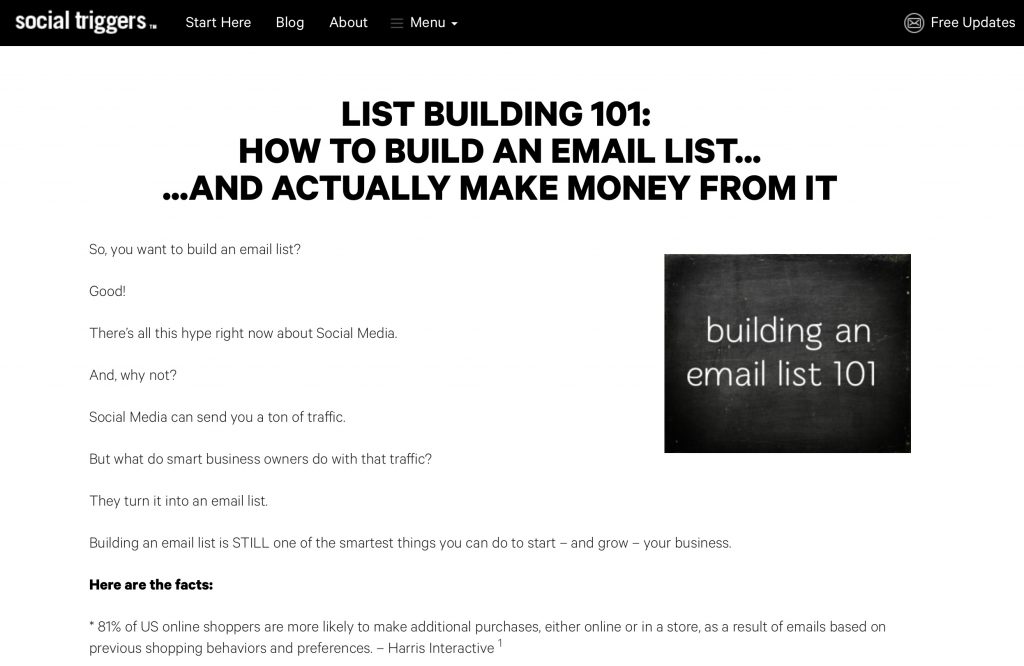
For example, Derek Halpern from the blog Social Triggers created this in-depth piece of cornerstone content, pulling together related articles and videos, all about list building.
His target keyword? “List building” – and the page is so well-optimized that it is currently ranking #1 on Google for this competitive term.
Then, the pages that fall underneath your cornerstone article should target more “long tail” terms, digging deeper into the subject with more targeted content.
Never target the same keywords with the pages underneath your cornerstone article, and for the article itself. If you do, the pages might compete for rankings and neither would do as well as one really optimized page.
You can use a plugin like Yoast SEO to help you optimize your content and to make sure you only target any particular keyword phrase one time.
Create Your Cornerstone as a “Page”
Yoast recommends creating your cornerstone content as “pages” instead of “posts” in WordPress. This is because pages are meant to be more static, permanent parts of your website.
Posts, meanwhile, fit into a chronology that can make them feel less and less relevant to your visitors as that timestamp gets more and more distant.
If you are upgrading an existing article into a cornerstone article, you may have already created it as a post.
That’s okay! You can use a free plugin like Post Type Switcher to convert any post to a page.
Place Your Cornerstone Content High in Your Site’s Hierarchy
Cornerstone articles, as we’ve already discussed, act as a gateway to the rest of your related content. Seeing as this is the case, they should feature prominently in your navigation and throughout your website.
Be sure to link every other post about the topic back to the cornerstone article, as this indicates to search engine crawlers the importance of that page within your site.
You can also link to it every time you touch upon that topic from other articles or pages around your site.
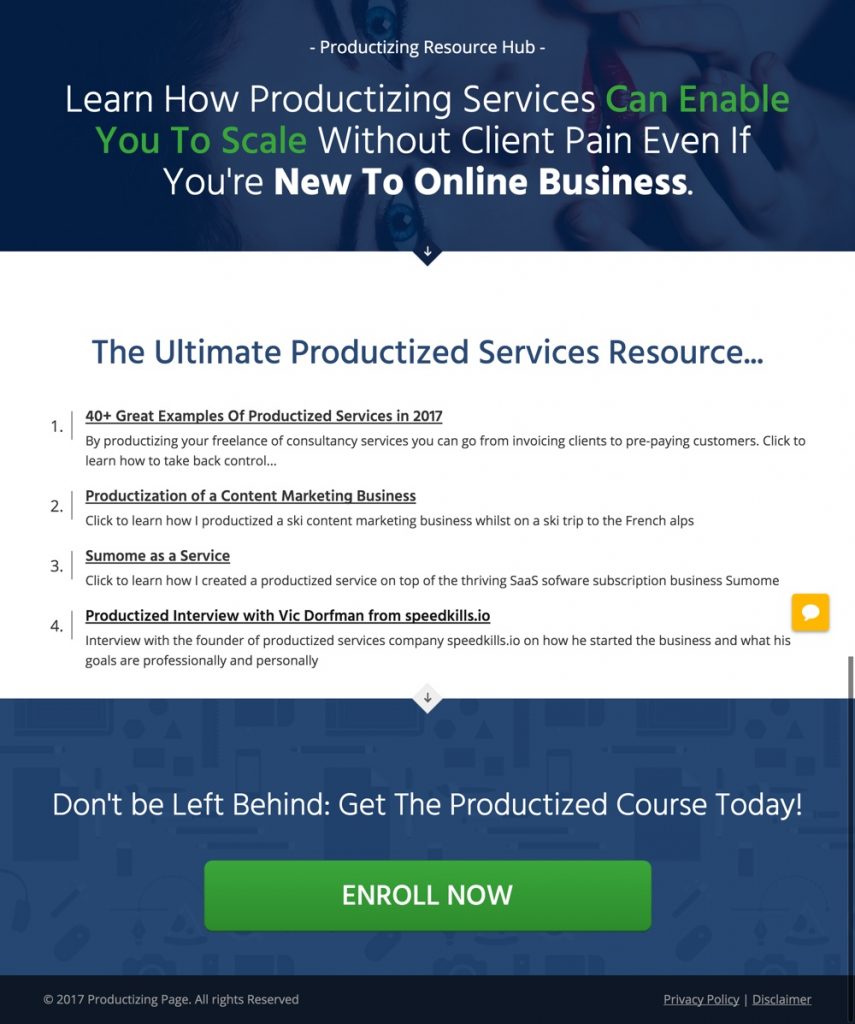
As an example, this page serves as a hub for the rest of Richard Patey’s articles about productized services. It guides the visitor through four articles to better explain this concept, and then directs the visitor to the large “enroll now” call-to-action.
Go Long and Broad
According to an article about cornerstone content by Yoast, “cornerstone articles are usually rather long.
Everything that’s important about a certain topic should be covered in your cornerstone article.”
You want your gateway article to be broad enough to be able to reference and link to every other article on your site about that topic.
You also want to be able to add in links to other related pieces in the future.
It is true that cornerstone content does not always have to be lengthy. Sometimes it is more of a landing page tying together related content and pushing the visitor towards a CTA, like an eBook download or subscription.
However, longer content is likely to be more successful, especially if your website is newer or hasn’t built up a lot of authority in your industry. This is just because longer content ranks better than shorter content.
Build in a Strong CTA
Cornerstone articles are the ideal location for a highly-targeted CTA.
If you have an eBook that expands on a topic even further or even one that simply pulls together your best articles around the topic into a well-designed and downloadable format, this is the ideal place to offer it in exchange for an email address.
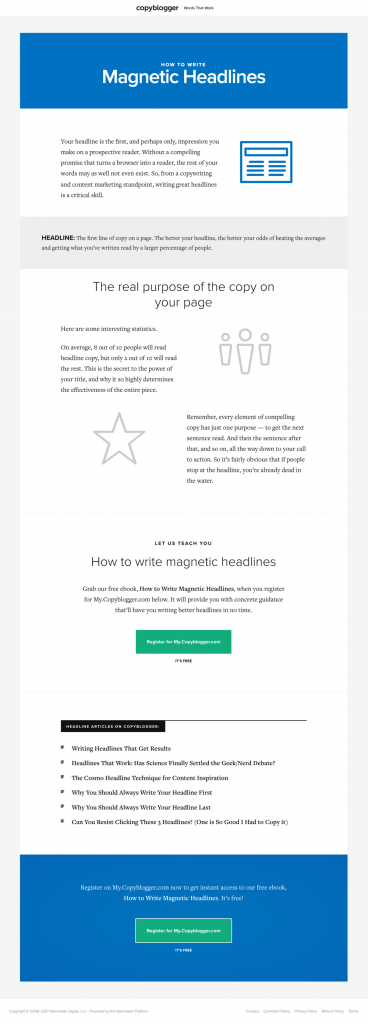
For example, Copyblogger’s landing page for their eBook How to Write Magnetic Headlines serves as a gateway to other articles on their blog about writing headlines and generates signups to their service in exchange for being able to download.
They often link to this page when they mention headline writing, funneling interested readers to their eBook.
Follow Internal Linking Best Practices
As we’ve mentioned before, focus on width in your cornerstone content rather than depth. Each section should act as an introduction to an idea that you expand upon in the linked articles.
If you find yourself covering something that you don’t have a relevant piece to link to on your blog for more information, that might be a sign of a blog post you should create.
Optimize Your Content For Social Media
Make it easy for people to share your content.
Tip #1: Add some social share buttons to make it easy to share
There are lots of paid and free plugins to make this easy. The key is to make these as visible as possible without being intrusive.
Consider placing the share buttons as a ‘sticky’ side, top, bottom, or floating bar depending on your site’s design.
Tip #2: Create shareable images
The truth is, writing phenomenal content alone is not enough.
Your audience is lazy and will most likely skim your content rather than reading it word for word.
Make it easy for them to read and digest by breaking up your content with images.
But don’t stop there. Take it a step further and make it impossible for them to not sure the content by creating engaging, relevant images.
After all, a study found high quality images were the most important tactic for optimizing content for social media.
You can use free stock photos and images, or have your own custom images and graphics created by hiring a professional designer from an unlimited graphics design service.

Tip #3: Hashtags
Hashtags make it easy to track trending topics, categorize social media posts and make it easier for users to find related content.
They can also help increase the visibility of your content and boost your social shares.
While the use of hashtags may seem rather random, there’s a strategy involved in getting the most out of them so make sure you do your research before you add them in.
Update Frequently
Your cornerstone content shouldn’t remain static as you continue to publish new content on your blog.
How can it be the gateway to all your relevant content if you don’t keep it up to date with all the newer articles you publish around that theme?
Schedule regular revisions to keep the cornerstone article up to date. It is a good idea to schedule a recurring calendar reminder every three to six months.
Of course, make your reminder more often if you are in a highly competitive industry or if you are producing a ton of related content.
I recommend installing a plugin like Last Modified Timestamp to show your readers that you are continuously updating the post.
The timestamp is sometimes displayed in Google search results, which can make your article more enticing – especially if it is surrounded by other, less up-to-date articles about the same thing.
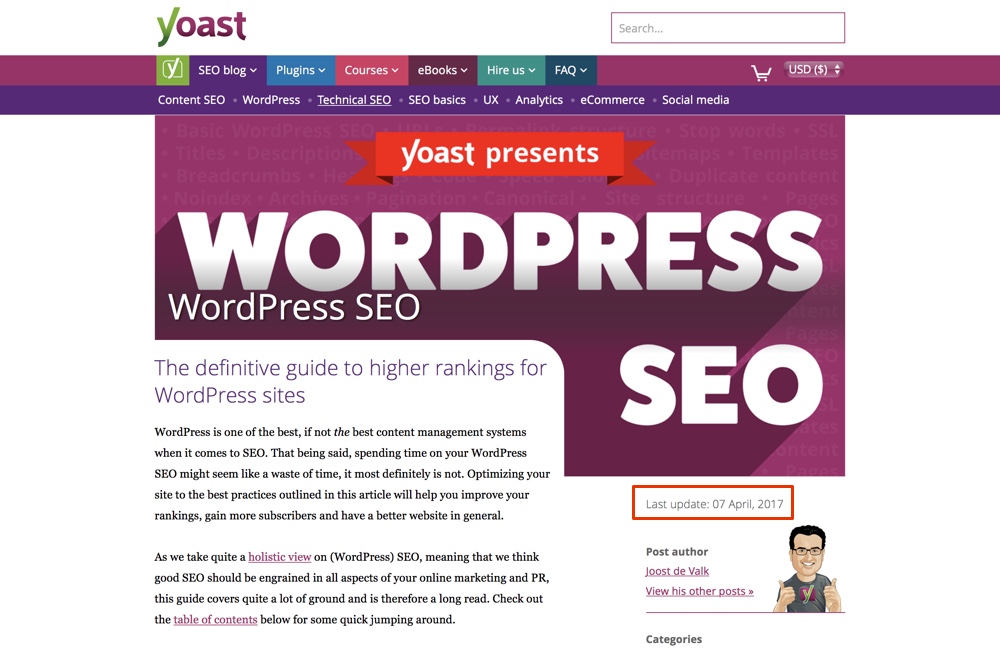
Yoast is the undeniable king of this strategy – and I’m sure they are very aware of its effectiveness! I feel like every time I visit a Yoast article, it has been revised within the last couple of months, even one as old and extensive as their “definitive guide” to WordPress SEO.
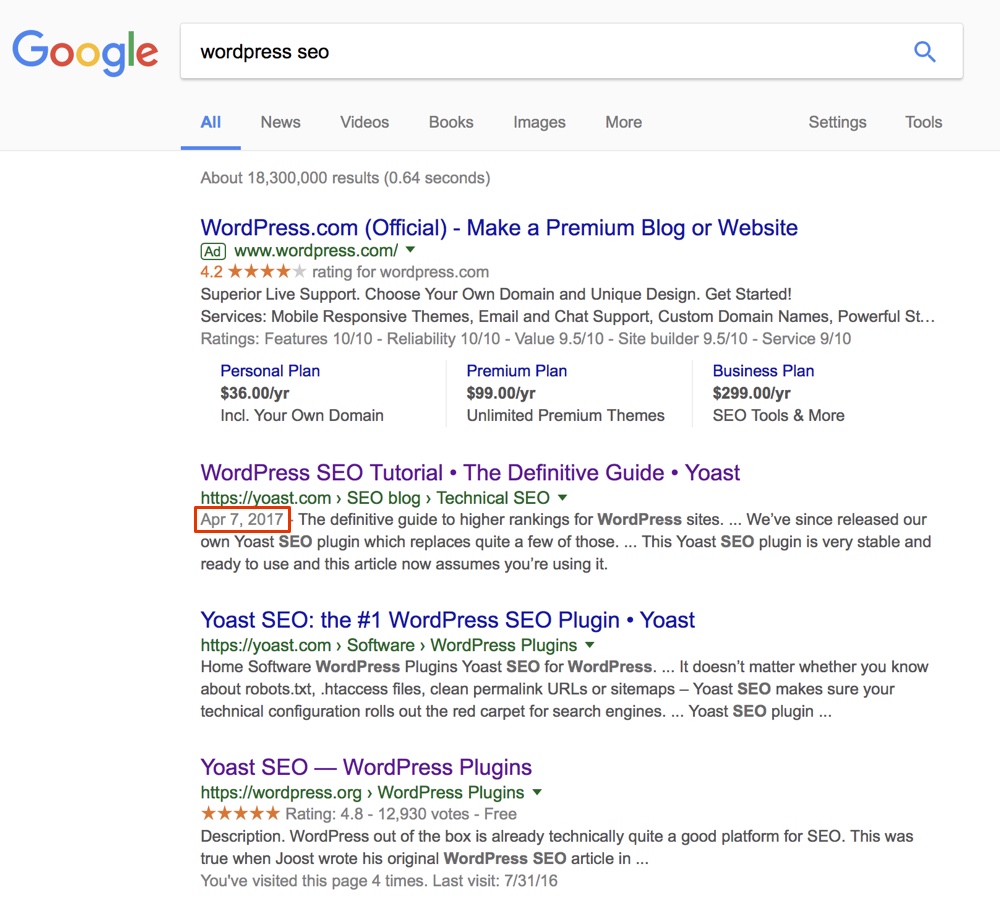
Wrapping Up
There you have it – eight important steps to help you achieve content marketing greatness!
Follow these simple steps to create a cornerstone article that will tie all your best articles together. You are sure to see improved rankings as a result.
Here’s a concise checklist of the steps outlined above:
- Consider upgrading an existing post.
- Target your most competitive keywords.
- Create your cornerstone article as a page.
- Place the cornerstone article high in your site’s hierarchy.
- Go long and broad
- Build in a strong CTA.
- Follow internal linking best practices
- Optimize your content for social media
- Update frequently.


